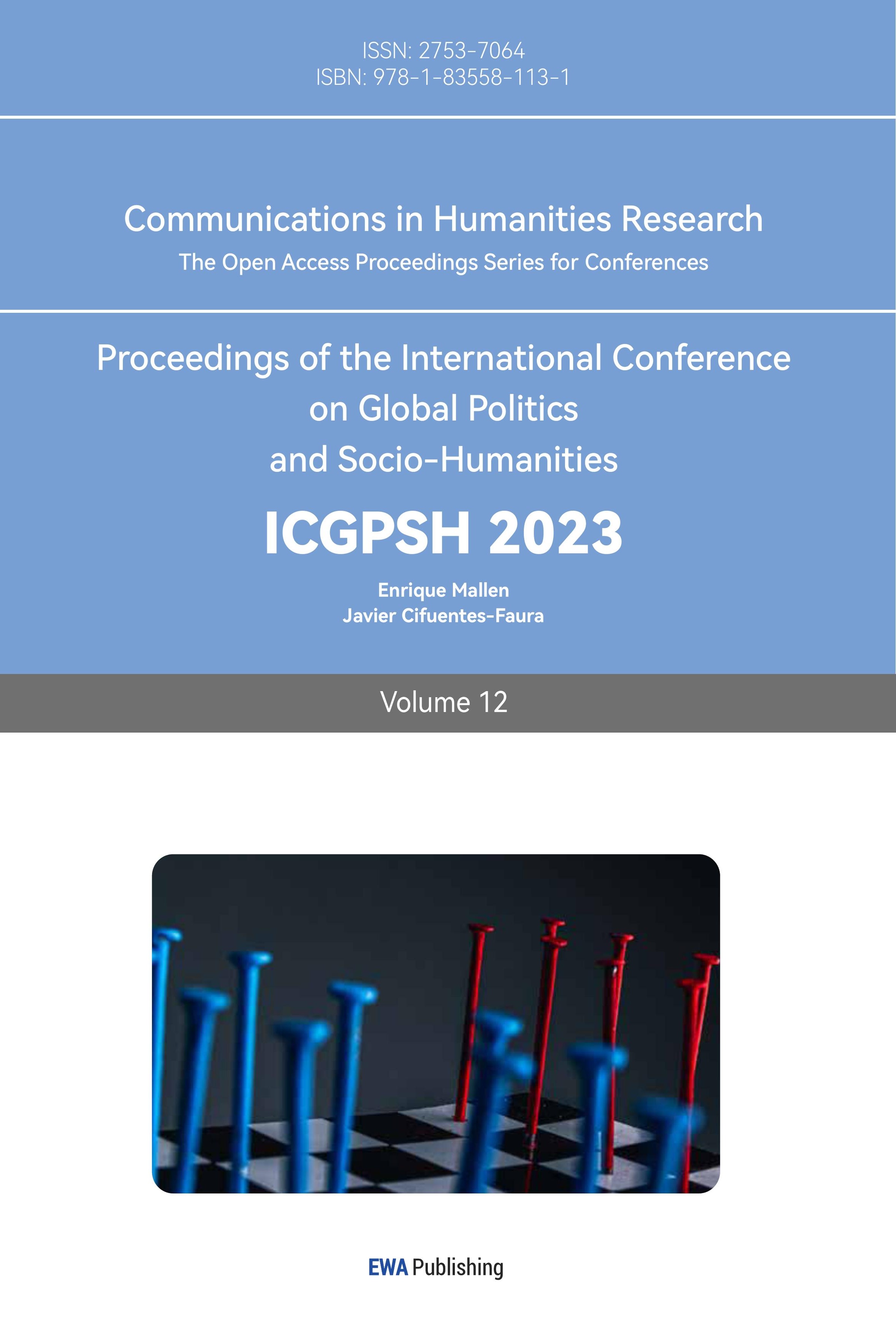1.Introduction
The Internet culture is a concept that has grown from the use of computer networks to replace the traditional ways of communication, entertainment, and several other functions in society. This culture has risen from changing communication to developing online communities, gaming, mobile apps, augmented and virtual realities, wearable computing, and social media, driving social, cultural, and economic interactions [1]. The social media feature has grown to facilitate more profound integration of the internet culture into society. In elucidation, the internet has embedded in every aspect of our daily lives through social media platforms influencing new forms of expression and ways of interaction [2]. Social media has reformed culture, facilitating easy access to everything and anything, revealing trends and ways to acquire them. Through internet culture and social media, there is diversity in the online community, influencer culture, activism, and social change that have shaped public discourse and driven revolutionary movements globally. While internet culture and social media have pioneered major changes and are constantly evolving globally, it is significant to note that these transformations vary between countries [3]. In other words, internet culture and social media transformations are subject to a country’s environment. In China, the internet culture and social media have specific characteristics influenced by the country’s social, technological, and political environment. According to [4], China’s internet culture and social media are subject to government regulation, a practice different from other nations. These unique environments and practices tend to shape the online trends and internet user behaviors specific to each country. Therefore, this essay explores the dynamic nature of Chinese internet culture by exploring social media and its impact on online trends. In doing so, it gives insights into the specific attributes and changes in Chinese internet culture.
2.History of Chinese Internet
The Chinese Internet culture development is linked to several forces, including government regulations, technological changes, software development, user behavior, and interactional practices. China’s early internet adoption began in the late1990s gaining support in the urban areas. According to [5], the Chinese government decided to open internet access to the people that forged the path from relative isolation. These Chinese leaders supported the adoption of the Internet to allow international connectivity serving the country’s purposes which drove the emergence of distinct eras in Chinese Internet culture. The initial era in late 1990 saw significant growth in internet use in urban populations and major educational and research institutions. This era also saw the establishment of Net Ease, one of the foundational internet companies that provided communications, news, internet portals, and games [6]. This was followed by Tencent QQ chat app innovation in February 1999 and Alibaba in April 1999 marking the beginning of giant e-commerce operations still operating to date. In the next era, in early 2000, China developed its first search engine Baidu, allowing for a wide range of research boosting the number of internet users to millions and extensive use of mobile phones [7]. As internet users increased, the concept of everyday online shopping was introduced, exposing retail shops to broader consumer markets through Taobao. The Taobao innovation facilitated by Alibaba drove eBay from the Chinese market following its focus on the specific needs of Chinese consumers [6]. To support online shopping Alipay is launched in the same era to support online payments in the online platforms. Later in the late 2000s era after issues of top secret information leakage, internet censorship, and regulations are implemented to control online content and maintain social and political stability [8]. These regulations Great Firewall of China and censors drove the suppression of search results, websites, or pages influencing internet user behaviors in China (Figure 1).
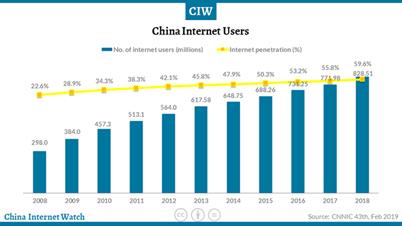
Figure 1: Number of internet users in China from 2008 to 2021 (In millions) [16].
During the late 2000s, internet use among Chinese people was regulated through various mechanisms such as temporarily blocking international platforms like YouTube or shutting down internet access in regions with violence, and blocking users from conversing political topics susceptible to controversies or conflicts see figure 1. During this era, the Chinese government proved its ability to control and crack down on internet adoption in Chinese society [8]. At the end of this era Weibo the “microblog”, launched which offers platforms for sharing posts with users. As the Weibo platform became prominent, China ushered in the early 2010s era, which marked the success of Chinese rigorous efforts to control and restrict online activities and content. A good example is the Big VS Crackdown which targeted accounts and influencers with large followings to mitigate the risks of unfettered online communications [6]. This era is also linked to the creation of the Cyberspace Administration of China to coordinate internet regulations in various sectors. Moreover, Tencent WeChat has launched a communication platform that offers instant messaging options [6]. As China approached the late 2010s era, more than 50% of the country’s population was utilizing the internet, creating demand for customized internet user tools for transportation, finances, and several other needs leading to the creation of prominent companies like Ofo and Mobike. Moreover, cyber security law officially began to apply in this era which set the foundation for the world’s most renowned internet regulatory regime. Now in the early 2020s and above era, China’s internet culture continues to grow, having created a unique and separate internet ecosystem from that of the world. This creates the question of whether China’s internet culture is capable of changing the future of internet use in the rest of the world.
3.Social Media Platforms Dominating Chinese Internet Culture
With its unique and separated online operations, China hosts one of the largest and most vigorous social media user populations. Consequently, social media platforms have become fundamental tools for marketing and other business operations that seek to engage the Chinese consumer market. Despite the existing censors and regulations blocking out major international social media platforms like Twitter and Facebook, Chinese social media sites host millions of users and keep attracting more. According to [9], China’s internet penetration has grown beyond the 70% mark and keeps expanding every year. This has transformed China into the world’s largest social media market. Among these social media sites, WeChat, Weibo, Xiaohongshu, and Douyin serve as means of online communication, e-commerce business, e-payments, entertainment, interactions, and news sources. The Wechat platform launched as an instant messaging app in 2011 hosts millions of users and gradually was improved with various advanced features and innovations. Aside from the online chat feature, Wechat provides an online payment system, online shopping, mini-programs for businesses, news access, making reservations, playing games, watching short videos, content sharing, and several others. The app is built for interactions allowing group formation for as many as 500 users, and finding strangers options for users to add friends and meet new people. WeChat has 1.26 billion active users as of 2023, according to [10], placing it fifth among the most popular social media networks worldwide. As the top messenger app in China, Wechat is a go-to platform for all Chinese internet users involves 25% of chat users are aged between 25 -30 years old, 33.5% are 24 years and below, and 41 years old and above makeup 19% of its users. See figure2 below.
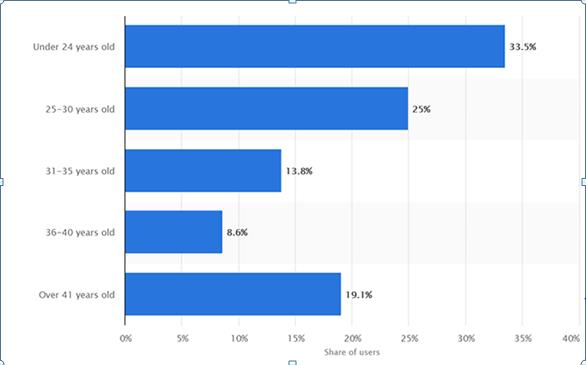
Figure 2: Age distribution of internet users in China 2022 [16].
The Weibo app positions second place as the most popular platform utilized in China. Weibo is comparable to Twitter and Facebook in that it is a micro-blogging network. Weibo users enjoy live streaming, access to the latest news, following accounts, creating personal accounts, and creating content. Its open nature facilitates easy reach to consumers, which makes it a significant platform for brand marketing and interactions. Weibo has 573 million active users, where 24-year-olds and below make up 36.54%, 25 to 30 are 24.05%, 30 to 35 are 16.07%, 56 to 40 makeup 12.41%, and 41 and above makeup 10.93%. See Figure3 below.
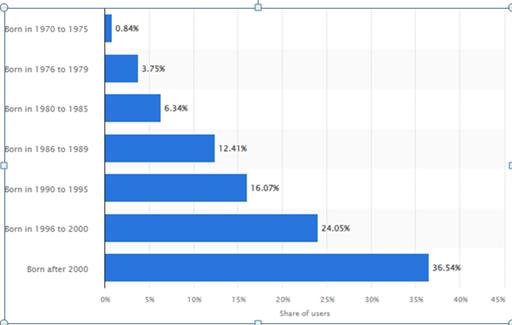
Figure 3: Internet users in China on Weibo [16].
Closely following is the Douyin app, a short video app that provides fun short video content for entertainment, often on celebrity lifestyles, trending topics, and several other content types. It keeps its users up to date with topics, live streaming options, KOL marketing, live streaming, and business account creation. Further, Douyin supports launching challenges to invite interactions and respond to the content increasing user interactions. Douyin app hosts 700 million active users and is set to grow to more than 800 million users in the next 2 years, with a majority of them under 30 years old.
The Xiaohongshu platform focuses on fashion, luxury, and beauty brands when it comes to social networking and online shopping. The platform facilitates a lifestyle-sharing platform centered on sharing fashion and beauty tips for its users as well as trading products. Xiaohongshu records 200 million active users with 70% of its users aged 44 and below. Its origin as a platform for women to share beauty tips and fashion explains the high number of female users compared to that of men.
4.User Behavior and Attitudes
The Chinese internet culture is a diverse environment subject to constant transformations driven by user behaviors and attitudes. Its unique internet culture has evolved alongside social media platforms developing significant patterns in several aspects that are constantly evolving. Drawing from the data on dominating Chinese Social media platforms, it is important to note that internet users utilize these platforms for information and entertainment. According to [11], Internet users consume content facilitated by social media platform connections and access this content from following official accounts and influencers that generate interesting content. In [12] research, Chinese netizens spend most of their time utilizing the internet to engage in entertainment activities including gaming, videos, and lives streaming that cater to user entertainment needs. Consequently, this develops content consumption patterns on videos, live streams, and news that influence social, economic, and cultural aspects. By way of explanation, video content has grown more significant to content consumers recently as more individuals rely on marketing videos from brands. With video accessibility in every major social network, consumers have moved from websites, online reviews, and commercial watching to relying on brand video content [13]. There is also the growth of mobile devices facilitating 99.7 % accessibility to the internet over the years, which facilitates easy access to short video content consumption.
The presence of platforms like Douyin has pushed demand for video clip creation apps migrating from live streaming apps. According to Thomala [14], survey, 3 in every five respondents consumes short video content before going to bed. Considering the bustling lifestyles of Chinese populations in modern society, short video consumption has fit significantly into complementing consumer needs. Moreover, Barry & Sandra Simas Graca [15] research describes short videos as funny and offer more value for their money despite theory shortness. Similarly, compared to TV mediums and internet videos produced through live stream platforms, mobile data options in mobile devices have grown more affordable and convenient for Chinese consumers. This recorded decline in TV channel viewership with research pointing to its rising costs and increased regulations as the number of short video users in China increased gradually. Social media offers platforms for reaching and engaging with other users through campaigns, article sharing, and developing relationships with different individuals in different geographical locations. Through content sharing social media allows for updates, photos, videos, links, articles, and music that influence online user trends and attitudes.
5.Features Shared by Chinese Internet Users on Social Media
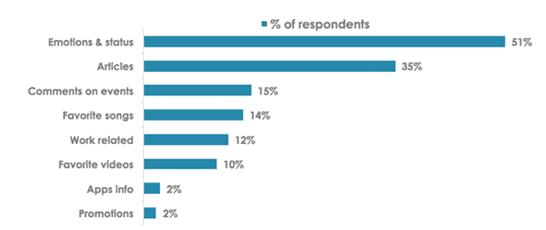
Figure 4: Number of short videos shared by internet users in China [16].
On platforms like Douyin, the features focus on sharing short videos with music and effects. Meanwhile, WeChat moments are geared toward sharing photos, articles, and updates. According to [11], more than half of Chinese internet users share on social media, while 21 ‘% read the shared content. This enhances connectivity and communication, allowing individuals to stay connected by sharing updates—personal status through posts. In 2016, 9.6 % of individuals shared a minimum of 3 posts daily, 23.1% posted 1 to 2 posts, 47.5% posted weekly and 19.8% every month [16]. This content sharing allows interactions with friends and individuals with the same interests. Moreover, sharing involves communicating brands’ experiences, which creates the word of mouth advertising for many brands and services, especially in the form of online reviews or influencer marketing. Consequently, sharing content has driven the emergence of influencer culture and consumerism that dictate user behavior and consumer choices [17]. By way of explanation, Social media influencers or key opinion leaders are often at the forefront of emerging trends, lifestyles, or opinions on various concepts. As a result, influencers introduce their followers to a lifestyle, product, service, or political opinions acting as trendsetters that drive discovery or create buzz around a particular object. According to Wielki [18], influencers and key opinion leaders drive media attention and guide internet user choices driving most Chinese companies to shift attention to influencer media marketing. In Shahbaznezhad et al. [19] research, 68% of consumers confirmed that the influencer market influenced their purchases.
6.Difference Between Traditional Social Media Structure and Influencer to Follower Social Structure
Additionally, China’s influencer market has grown in functionality following the social media, e-commerce, and e-payments integrations keeping its influencer marketing industry in China ahead of the West [20]. These significant integrations have influenced retailtainment and the transformation of Chinese e-commerce sites into social media platforms such as the Xiaogongshu. In elucidation, the integration of e-commerce and social media with influencer marketing has driven content creation in e-commerce platforms supporting content sharing for e-commerce shoppers to hang out as if they were on a social media platform. Therefore, the Chinese internet culture has gone further to integrate business and pleasure embracing retailtainment [13]. Additionally, these integrations support functions integrations within one app that describes the unique Chinese internet culture. For instance, apps like WeChat provide messaging, e-payment services, social networking, and e-commerce making it convenient for individual users and businesses at large.
Social media platforms have also transformed user behavior and online trends into validation and self –presentation culture. According to Keum et al. [21], internet users seek social validation on media platforms by sharing attractive content about their life status, photos, achievements, and other aspects. Similarly, social media platforms contribute further to this culture of social validation and self-presentation by providing likes, comments, and shared features reinforcing the self-esteem and online presence culture. In Shahbaznezhad et al. [19] research, commenting and liking to drive active user engagement with content through leaving a comment, sharing, or active participation in discussions and debates on these platforms. While these guarantee the significant exchange of information, teaching socializing, and business growth, it drives a negative culture. Research associates the need for self-validation and presentation with great levels of anxiety and low self-esteem as people grow more accustomed to focusing on random words from strangers [21]. Consequently, many individuals are stuck in measuring their self-worth through social media likes, followers, and shares creating a heightened sense of competition in Chinese society. Further, Hjetland et al. [22] research suggests that social comparison and self-presentation on social media represent risk factors for influencing the negative mental health effects of social media. The potential for harm in social media use is exaggerated by the possibility of individuals turning to social media sources to solve depression, isolation, or depression. In China, studies have shown that excessive use of social media has led to higher depression levels among Chinese youth. Zhang et al., [23] research links this to the reduced time spent in face-to-face interactions which has been replaced by the increased dependence on social media and virtual communication. This, in turn, has increased the sense of loneliness and negative feelings among Chinese internet users. Additionally, the increased use of social media platforms increases addiction to electronic devices, reducing tie for rest, which affects the health of individuals. Social media platforms have also contributed to the emergence of online communities and identity expression where social media families give a sense of belonging, allowing users to connect to like-minded individuals.
7.Conclusion
The Chinese culture has undergone a fundamental transformation with the rise of social media platforms and online trends, which in turn influence the behaviors and attitudes of Chinese internet users. Analyzing the social media platforms and online trends revealed insights into the aspects of Chinese internet culture on the behaviors of Chinese internet users within the social media context [24]. Since its adoption in the late 1990s, the internet in China has evolved continuously, driven by various factors that shaped the foundation of the Chinese internet culture. These stages of evolution saw the gradual emergence of significant innovations and social media platforms such as WeChat and Douyin dominating the internet to date [10]. These media platforms have played a significant role in facilitating communication, interactions, and connections among people. They have operated as channels for entertainment, expression, identity, business development, and society building [16]. Today, these platforms have supported online communities’ formation, which has allowed global integration and the creation of user communities sharing similar interests. Moreover, these social media platforms have pioneered different aspects of Chinese internet culture including influencer culture, consumerism, self-validation, self-expression, and self-identity that influence the user choices, perceptions, and behaviors. Further t, the study highlights health and overdependence on electronics issues associated with social media use which reveals an unhealthy side of the Chinese Online culture. As the Chinese internet culture continues to evolve, comprehending the dynamic user behavior within the social media environment is significant to operate in the exceptional Chinese online environment. Communicating the social media platforms and online trends, it discusses the Chinese internet culture environment and the trends in user behaviors. Therefore, the rapid increase of social media platforms and online trends’ emergence mark the Chinese internet culture evolution shaping Chinese internet user behaviors.
References
[1]. Dwivedi, Y. K., Hughes, L., et al. “Metaverse beyond the hype: Multidisciplinary perspectives on emerging challenges, opportunities, and agenda for research, practice and policy,” International Journal of Information Management, vol. 66, 102542, 2022. [Online]. Retrieved from https://doi.org/10.1016/j.ijinfomgt.2022.102542.
[2]. Mannell, K., Smith, E. T. “Alternative Social Media and the Complexities of a More Participatory Culture: A View From Scuttlebutt,” Social Media + Society, vol. 8, no. 3, 205630512211224, 2022. [Online]. Retrieved from https://doi.org/10.1177/20563051221122448.
[3]. Li, H., Jung, S. “Networked audiences and cultural globalization,” Sociology Compass, vol. 12, no. 4, e12570, 2018. [Online]. Retrieved from https://doi.org/10.1111/soc4.12570.
[4]. Moynihan, H., Patel, C. “Restrictions on online freedom of expression in China The domestic, regional and international implications of China’s policies and practices,” International Law Programme Asia-Pacific Programme, pp. 1–25, 2021. [Online]. Retrieved from https://www.chathamhouse.org/sites/default/files/2021-03/2021-03-17-restrictions-online-freedom-expression-china-moynihan-patel.pdf.
[5]. Webster, G. (2019). A Brief History of the Chinese Internet. Logic Magazine. Retrieved from https://logicmag.io/china/a-brief-history-of-the-chinese-internet/.
[6]. Yang, G. (2003). The Co-evolution of the Internet and Civil Society in China. Asian Survey, 43(3), 405–422. Retrieved from https://doi.org/10.1525/as.2003.43.3.405.
[7]. Yang, G. (2012). A Chinese Internet? History, practice, and globalization. Chinese Journal of Communication, 5(1), 49–54. Retrieved from https://doi.org/10.1080/17544750.2011.647744.
[8]. Moynihan, H., & Patel, C. (2021). Restrictions on online freedom of expression in China The domestic, regional and international implications of China’s policies and practices International Law Programme Asia-Pacific Programme (pp. 1–25). Retrieved from https://www.chathamhouse.org/sites/default/files/2021-03/2021-03-17-restrictions-online-freedom-expression-china-moynihan-patel.pdf.
[9]. Thomala, L. (2023). China Internet Users: Demographics & Statistics. Statista. Retrieved from https://www.statista.com/statistics/277586/number-of-internet-users-in-china/.
[10]. Benitez, G. (2021). Number of active WeChat messenger accounts Q2 2011-Q2 2021. Statista. Retrieved from https://www.statista.com/statistics/255778/number-of-active-wechat-messenger-accounts/.
[11]. Dwivedi et al., (2021). Understanding the Effect of Social Media on User Behavior: A Decade of Research. International Journal of Information Management. Retrieved from https://www.sciencedirect.com/science/article/pii/S0268401220302735.
[12]. Feing, C. (2022, August 31). More than 91 per cent of Chinese netizens use short video apps, survey finds. South China Morning Post. Retrieved from https://www.scmp.com/tech/tech-trends/article/3190845/chinese-netizens-spending-more-time-online-short-video-app-usage.
[13]. Appel, G., Grewal, L., Hadi, R., & Stephen, A. T. (2019). The Future of Social Media in Marketing. Journal of the Academy of Marketing Science, 48(1), 79–95. Springer. Retrieved from https://doi.org/10.1007/s11747-019-00695-1.
[14]. Thomala, L. L. (2023). China: common short video usage scenes 2022. Statista. Retrieved from https://www.statista.com/statistics/1365221/china-common-situations-of-watching-short-videos/#:~:text=A%202022%20survey%20on%20Chinese.
[15]. Barry, J., & Sandra Simas Graca. (2018, February). Humor Effectiveness in Social Video Engagement. ResearchGate; Taylor & Francis (Routledge). Retrieved from https://www.researchgate.net/publication/322011174_Humor_Effectiveness_in_Social_Video_Engagement.
[16]. CIW Team. (2016, September 26). What do China internet users share on social media? China Internet Watch. Retrieved from https://www.chinainternetwatch.com/18956/social-sharing-2016/.
[17]. Zhang, L., & Erturk, E. (2022). Potential Lessons from Chinese Businesses and Platforms for Online Networking and marketing: an Exploratory Study. Social Sciences & Humanities Open, 6(1), 100274. Retrieved from https://doi.org/10.1016/j.ssaho.2022.100274.
[18]. Wielki, J. (2020). Analysis of the Role of Digital Influencers and Their Impact on the Functioning of the Contemporary On-Line Promotional System and Its Sustainable Development. Sustainability, 12(17), 7138. Mdpi. Retrieved from https://doi.org/10.3390/su12177138.
[19]. Shahbaznezhad, H., Dolan, R., & Rashidirad, M. (2022). The Role of Social Media Content Format and Platform in Users’ Engagement Behavior. Journal of Interactive Marketing, 53(1), 47–65. SagePub. Retrieved from https://doi.org/10.1016/j.intmar.2020.05.001.
[20]. Sun, Y., Wang, R., Cao, D., & Lee, R. (2021). Who are social media influencers for luxury fashion consumption of the Chinese Gen Z? Categorisation and empirical examination. Journal of Fashion Marketing and Management: An International Journal, ahead-of-print(ahead-of-print). Retrieved from https://doi.org/10.1108/jfmm-07-2020-0132.
[21]. Keum, B. T., Wang, Y.-W., Callaway, J., Abebe, I., Cruz, T., & O’Connor, S. (2022). Benefits and harms of social media use: A latent profile analysis of emerging adults. Current Psychology. Retrieved from https://doi.org/10.1007/s12144-022-03473-5.
[22]. Hjetland, G. J., Finserås, T. R., Sivertsen, B., Colman, I., Hella, R. T., & Skogen, J. C. (2022). Focus on Self-Presentation on Social Media across Sociodemographic Variables, Lifestyles, and Personalities: A Cross-Sectional Study. International Journal of Environmental Research and Public Health, 19(17), 11133. Retrieved from https://doi.org/10.3390/ijerph191711133.
[23]. Zhang, J., Hu, H., Hennessy, D., Zhao, S., & Zhang, Y. (2019). Digital media and depressive symptoms among Chinese adolescents: A cross-sectional study. Heliyon, 5(5), e01554. Retrieved from https://doi.org/10.1016/j.heliyon.2019.e01554.
[24]. Zhang, L., & Erturk, E. (2022). Potential Lessons from Chinese Businesses and Platforms for Online Networking and marketing: an Exploratory Study. Social Sciences & Humanities Open, 6(1), 100274. Retrieved from https://doi.org/10.1016/j.ssaho.2022.100274.
Cite this article
Dai,P. (2023). The Evolution of Chinese Internet Culture: A Study on the Social Media Platforms’ Role and Their Impact on Online Trends. Communications in Humanities Research,12,254-262.
Data availability
The datasets used and/or analyzed during the current study will be available from the authors upon reasonable request.
Disclaimer/Publisher's Note
The statements, opinions and data contained in all publications are solely those of the individual author(s) and contributor(s) and not of EWA Publishing and/or the editor(s). EWA Publishing and/or the editor(s) disclaim responsibility for any injury to people or property resulting from any ideas, methods, instructions or products referred to in the content.
About volume
Volume title: Proceedings of the International Conference on Global Politics and Socio-Humanities (ICGPSH 2023)
© 2024 by the author(s). Licensee EWA Publishing, Oxford, UK. This article is an open access article distributed under the terms and
conditions of the Creative Commons Attribution (CC BY) license. Authors who
publish this series agree to the following terms:
1. Authors retain copyright and grant the series right of first publication with the work simultaneously licensed under a Creative Commons
Attribution License that allows others to share the work with an acknowledgment of the work's authorship and initial publication in this
series.
2. Authors are able to enter into separate, additional contractual arrangements for the non-exclusive distribution of the series's published
version of the work (e.g., post it to an institutional repository or publish it in a book), with an acknowledgment of its initial
publication in this series.
3. Authors are permitted and encouraged to post their work online (e.g., in institutional repositories or on their website) prior to and
during the submission process, as it can lead to productive exchanges, as well as earlier and greater citation of published work (See
Open access policy for details).
References
[1]. Dwivedi, Y. K., Hughes, L., et al. “Metaverse beyond the hype: Multidisciplinary perspectives on emerging challenges, opportunities, and agenda for research, practice and policy,” International Journal of Information Management, vol. 66, 102542, 2022. [Online]. Retrieved from https://doi.org/10.1016/j.ijinfomgt.2022.102542.
[2]. Mannell, K., Smith, E. T. “Alternative Social Media and the Complexities of a More Participatory Culture: A View From Scuttlebutt,” Social Media + Society, vol. 8, no. 3, 205630512211224, 2022. [Online]. Retrieved from https://doi.org/10.1177/20563051221122448.
[3]. Li, H., Jung, S. “Networked audiences and cultural globalization,” Sociology Compass, vol. 12, no. 4, e12570, 2018. [Online]. Retrieved from https://doi.org/10.1111/soc4.12570.
[4]. Moynihan, H., Patel, C. “Restrictions on online freedom of expression in China The domestic, regional and international implications of China’s policies and practices,” International Law Programme Asia-Pacific Programme, pp. 1–25, 2021. [Online]. Retrieved from https://www.chathamhouse.org/sites/default/files/2021-03/2021-03-17-restrictions-online-freedom-expression-china-moynihan-patel.pdf.
[5]. Webster, G. (2019). A Brief History of the Chinese Internet. Logic Magazine. Retrieved from https://logicmag.io/china/a-brief-history-of-the-chinese-internet/.
[6]. Yang, G. (2003). The Co-evolution of the Internet and Civil Society in China. Asian Survey, 43(3), 405–422. Retrieved from https://doi.org/10.1525/as.2003.43.3.405.
[7]. Yang, G. (2012). A Chinese Internet? History, practice, and globalization. Chinese Journal of Communication, 5(1), 49–54. Retrieved from https://doi.org/10.1080/17544750.2011.647744.
[8]. Moynihan, H., & Patel, C. (2021). Restrictions on online freedom of expression in China The domestic, regional and international implications of China’s policies and practices International Law Programme Asia-Pacific Programme (pp. 1–25). Retrieved from https://www.chathamhouse.org/sites/default/files/2021-03/2021-03-17-restrictions-online-freedom-expression-china-moynihan-patel.pdf.
[9]. Thomala, L. (2023). China Internet Users: Demographics & Statistics. Statista. Retrieved from https://www.statista.com/statistics/277586/number-of-internet-users-in-china/.
[10]. Benitez, G. (2021). Number of active WeChat messenger accounts Q2 2011-Q2 2021. Statista. Retrieved from https://www.statista.com/statistics/255778/number-of-active-wechat-messenger-accounts/.
[11]. Dwivedi et al., (2021). Understanding the Effect of Social Media on User Behavior: A Decade of Research. International Journal of Information Management. Retrieved from https://www.sciencedirect.com/science/article/pii/S0268401220302735.
[12]. Feing, C. (2022, August 31). More than 91 per cent of Chinese netizens use short video apps, survey finds. South China Morning Post. Retrieved from https://www.scmp.com/tech/tech-trends/article/3190845/chinese-netizens-spending-more-time-online-short-video-app-usage.
[13]. Appel, G., Grewal, L., Hadi, R., & Stephen, A. T. (2019). The Future of Social Media in Marketing. Journal of the Academy of Marketing Science, 48(1), 79–95. Springer. Retrieved from https://doi.org/10.1007/s11747-019-00695-1.
[14]. Thomala, L. L. (2023). China: common short video usage scenes 2022. Statista. Retrieved from https://www.statista.com/statistics/1365221/china-common-situations-of-watching-short-videos/#:~:text=A%202022%20survey%20on%20Chinese.
[15]. Barry, J., & Sandra Simas Graca. (2018, February). Humor Effectiveness in Social Video Engagement. ResearchGate; Taylor & Francis (Routledge). Retrieved from https://www.researchgate.net/publication/322011174_Humor_Effectiveness_in_Social_Video_Engagement.
[16]. CIW Team. (2016, September 26). What do China internet users share on social media? China Internet Watch. Retrieved from https://www.chinainternetwatch.com/18956/social-sharing-2016/.
[17]. Zhang, L., & Erturk, E. (2022). Potential Lessons from Chinese Businesses and Platforms for Online Networking and marketing: an Exploratory Study. Social Sciences & Humanities Open, 6(1), 100274. Retrieved from https://doi.org/10.1016/j.ssaho.2022.100274.
[18]. Wielki, J. (2020). Analysis of the Role of Digital Influencers and Their Impact on the Functioning of the Contemporary On-Line Promotional System and Its Sustainable Development. Sustainability, 12(17), 7138. Mdpi. Retrieved from https://doi.org/10.3390/su12177138.
[19]. Shahbaznezhad, H., Dolan, R., & Rashidirad, M. (2022). The Role of Social Media Content Format and Platform in Users’ Engagement Behavior. Journal of Interactive Marketing, 53(1), 47–65. SagePub. Retrieved from https://doi.org/10.1016/j.intmar.2020.05.001.
[20]. Sun, Y., Wang, R., Cao, D., & Lee, R. (2021). Who are social media influencers for luxury fashion consumption of the Chinese Gen Z? Categorisation and empirical examination. Journal of Fashion Marketing and Management: An International Journal, ahead-of-print(ahead-of-print). Retrieved from https://doi.org/10.1108/jfmm-07-2020-0132.
[21]. Keum, B. T., Wang, Y.-W., Callaway, J., Abebe, I., Cruz, T., & O’Connor, S. (2022). Benefits and harms of social media use: A latent profile analysis of emerging adults. Current Psychology. Retrieved from https://doi.org/10.1007/s12144-022-03473-5.
[22]. Hjetland, G. J., Finserås, T. R., Sivertsen, B., Colman, I., Hella, R. T., & Skogen, J. C. (2022). Focus on Self-Presentation on Social Media across Sociodemographic Variables, Lifestyles, and Personalities: A Cross-Sectional Study. International Journal of Environmental Research and Public Health, 19(17), 11133. Retrieved from https://doi.org/10.3390/ijerph191711133.
[23]. Zhang, J., Hu, H., Hennessy, D., Zhao, S., & Zhang, Y. (2019). Digital media and depressive symptoms among Chinese adolescents: A cross-sectional study. Heliyon, 5(5), e01554. Retrieved from https://doi.org/10.1016/j.heliyon.2019.e01554.
[24]. Zhang, L., & Erturk, E. (2022). Potential Lessons from Chinese Businesses and Platforms for Online Networking and marketing: an Exploratory Study. Social Sciences & Humanities Open, 6(1), 100274. Retrieved from https://doi.org/10.1016/j.ssaho.2022.100274.





